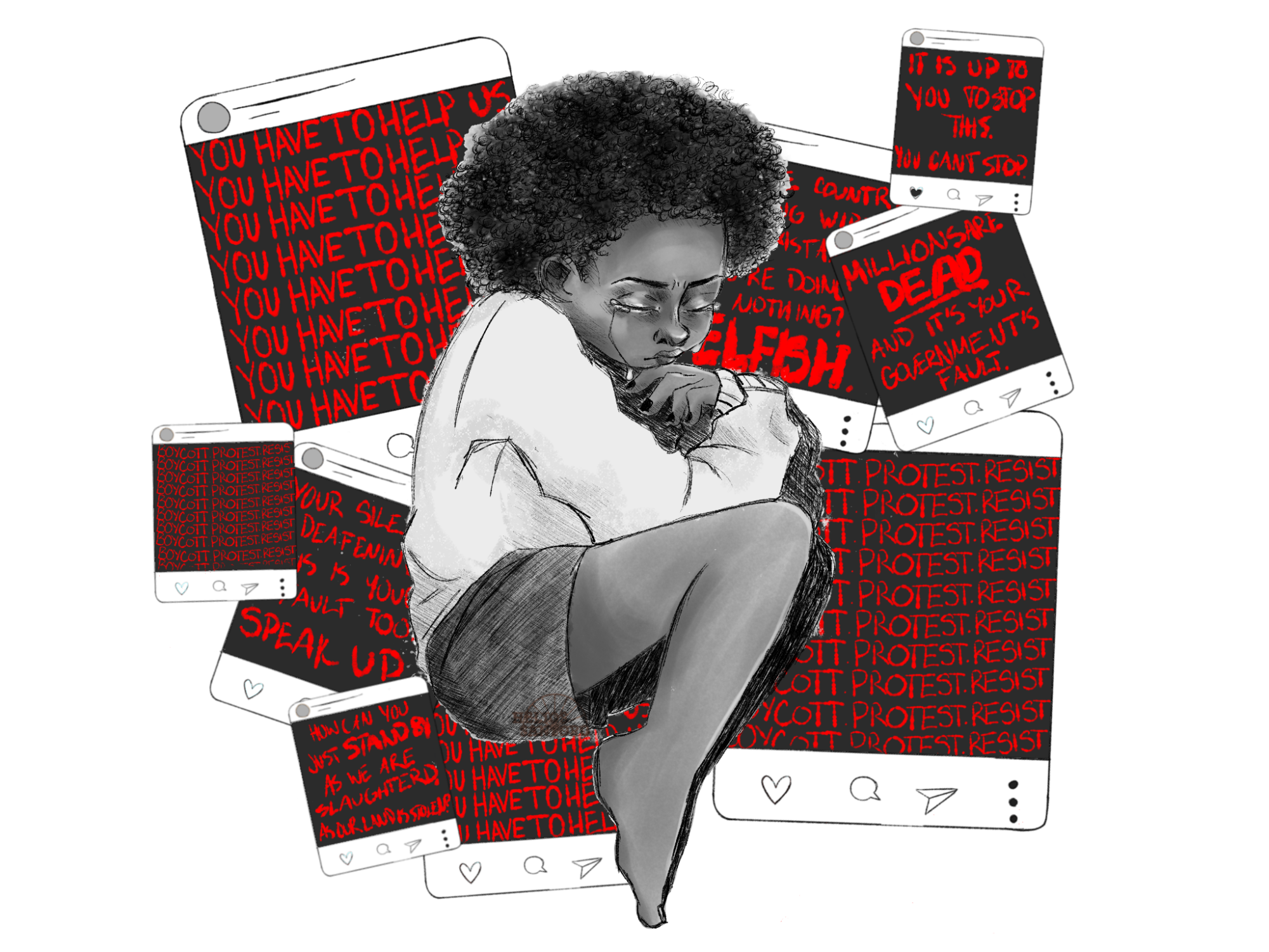
The sound of a bull horn and chanting students split the thick morning mist that usually cloaks Ankeny in early November. It was the morning of Nov. 9, 2023, and the Whitman Student Action Committee (SAC) had collaborated with Whitman Students for Justice in Palestine (WSJP) to organize a walkout in support of Palestine.
I burrowed my frigid cheeks deeper into the collar of my puffer coat as I exited Penrose Library, dodging onlookers as I headed to class. I slowed my pace as I walked by, however, and my moral conscience pricked me.
I was due to give a presentation in class soon, but the further I walked from the group of protesters, the worse I felt. Would I risk a penalty to my grade and fail my presentation in favor of joining my peers and their passionate cries for social justice?
I am not one for jostling crowds and spirited assemblies. Personally, I’d sooner jump into the icy waters of Lakum Duckum than attend a raucous frat party and there is no world in which I could see myself giving an impassioned, pre-protest address to any amount of people.
But I couldn’t be the only person on campus who had these feelings, right? There must be other crowd-fearing introverts like me, getting themselves worked up about the same simple decision and rapidly approaching their mental capacity of emotional turmoil for the day.
Disheartened and seriously questioning my moral compass, I turned away and trudged to class.
Later in the day, I spoke to a professor about my conundrum and wondered if there could be a bigger issue at stake. If protesting is not a realistic medium of activism for introverted students, it is possible that a whole sector of the student population is missing out on participating in collective action. My professor reassured me that there are many ways to participate in social activism, but the worry continued to niggle in the back of my mind like a stubborn loose tooth that refuses to let go.
It was not until months later that I sat down with senior Alanna Sherman and asked her about her experience with social activism. Sherman is a member of WSJP and has been involved in organizing various fundraising and awareness events for the group. Sherman seconded the advice of the professor and assured me that protests were not the only way to be involved with student activism on campus.
“We do way more than just protests,” Sherman said. “WSJP [has hosted] cookouts, a craft sale and teach-ins. Last semester, [we] tried our best to record as many teach-ins as possible for people who weren’t able to be there physically, and we would share [recordings] on our listserv.”
By recording their teach-in events for building campus awareness, WSJP allows those who are physically unable to attend events to participate. It also provides an option for people who are daunted by large in-person events and activities. In addition to an email listserv, the group has an Instagram page with which they can share information and other educational resources to a wider audience.
When thinking about activism, many people’s minds may jump to marches and rallies: ultra-visible forms of protest. However, many of these forms of activism, such as watching event recordings or interacting with an Instagram account, are less visible.
Associate Professor of Sociology Gilbert Mireles, who teaches a course on social movements, emphasized that visibility doesn’t always indicate the success of a social activism movement.
“There are a lot of different ways in which people can engage in collective action,” Mireles said. “Some forms of collective action are very visible and others are not. But just because something isn’t as visible doesn’t mean it’s less effective.”
As I continued to research the issue and chat with professors about my moral qualm, the significance of a particularly common mode of social activism began to emerge: activism via social media. Social media as an alternative method of protest and activism has become increasingly apparent. This is especially true for young people, who are well-versed with social media and may feel more comfortable with online platforms than traditional protesting.
Activists use social media in many ways; digital spaces give people the ability to express their individual opinions, engage in political discourse, disseminate information and share educational resources pertaining to a certain cause.
Sometimes referred to as “hashtag activism,” contributing to social justice movements via social media is a way for people to connect without being in direct proximity to each other. It is also a way for people to share digital art, photography, videos and music as an alternative mode of social justice expression. This can be a great option for introverts, as well as for folks who express opinions through art.
Visiting Assistant Professor of Sociology Rachel Nickens acknowledges diversity in modes of social activism, as well as their shared ability to boost awareness.
“It’s not always as clear directly what kind of change social media activism or ‘hashtag activism’ makes,” Nickens said. “But it certainly contributes to raising awareness of an issue and in potentially getting other people invigorated or excited [about social activism].”
“Hashtag activism” has its pros and cons, as Nickens alluded to. It may be unclear, and could fall prey to false information or instigate cyber bullying. However, it still has a place in activism and can provide an avenue of involvement for people who feel less comfortable in more direct settings.
But technology is not the only alternative medium to engaging in social activism; other forms of expression such as visual art, music and dance offer creative outlets for people to join conversations about gender inequality, the climate crisis or political discourse.
For example, Freedom Songs is a program that was originally created by Whitman students in 2016. According to their website, the program hosts events that seek “to reflect upon the many forms of freedom, especially concerning race, for different groups, contexts and individuals” and is an opportunity to “listen to stories that have gone untold, voice our desire for justice and open conversation for the next step towards freedom as a more caring, compassionate community” through various forms of music and art.
Senior Jenny Contreras participated in the 2023 Freedom Songs event, opting to celebrate the beauty of Mexican culture through Mexican folklore dance.
“The ability to be on stage in my dress dancing along to Spanish music showcased that freedom is the ability to express your culture unapologetically,” Contreras said. “My parents have taught me the importance of preserving our culture and they are the reason why I began dancing. At Freedom Songs, it was an opportunity to share and continue preserving Mexican culture with others.”
Freedom Songs creates a positive and celebratory environment for minority voices and perspectives. The event is also supposed to contribute towards building an extended conversation that continues outside the performances.
Mireles emphasized the value in starting conversations and creating a safe and friendly atmosphere for engaging in discourse about issues that are not always easy to talk about. He spoke about the recent student strike and sit-in in Memorial Building, and commended students for creating a catalyst for such conversations.
“I think that people started having conversations on this campus about very complex issues. There’s value in that. So to me, I think there’s a lot of different ways that we can think about the utility of participating in collective action,” said Mireles.
Nickens also highlighted the need for collaboration and conversation between individuals with different perspectives, interests and skills.
“Social movement studies show that it takes a concerted effort usually with many different strategies and tactics to cause change,” Nickens said. “And different people bring different strengths in terms of how they want to and are able to get involved. On the large scale, social movements require drawing on all those different strengths and all those different tactics.”
So, despite my initial concerns, there are more ways to protest than attending walk-outs and sit-ins, although these are also useful methods. Knowing that there are different types of protest for different types of people is important, as activism has historically been a huge part of youth culture, and continues to flourish among young people. Knowing that there are options for everyone allows young people to take advantage of this facet of youth culture.
Today’s circumstances make social activism even more prevalent. Born between the years of 1995 and 2010, members of Gen Z are uniquely positioned in an era of unprecedented social unrest. Raised against the backdrop of the 2008 Great Recession, Gen Zers have become the front-row audience to the consequences of rising social inequality, exacerbated by the climate crisis, a global pandemic, political division and economic distress, just to name a few.
“There’s a lot of mobilization taking place around a variety of issues among young people, and young people make up an increasingly important segment of different social movements,” said Mireles, recognizing the major role that youth play in social activism.
Part of the reason that social activism is deeply rooted in youth culture is due to the transitory nature of youth. Teetering on the cusp of independence while retaining access to familial support and resources, adolescents experience a unique period of opportunity in their lives that make rebellion and resistance possible.
Nickens, who teaches a course on the sociology of adolescence, attests to the significance of the role that young people play in social activism efforts.
“One thing about youth is that young people are often less restrained by demands, like full-time employment or marriage or family,” Nickens said. “So within the context of the sociology of social activism, scholars talk about young people as having biographical availability because they’re at a time in their life story where they are more available to be involved [in social] causes.”
From the colorful tie dye and loose locks favored by American youth involved in the anti-war movement during the Vietnam War to the crowds of young people attending Black Lives Matter marches wearing t-shirts emblazoned with “BLM,” social activism has always been a highly visible aspect of many teenagers’ and young adults’ lives.
“We know that young people in general, or young people broadly defined, are often a bit less jaded and see more possibility,” Nickens said. “And especially in college or university settings where they’re with other young people, they’re able to cultivate a collective excitement around lobbying for social change.”
Being aware of the power of young people when it comes to activism can be exciting and invigorating. However, actually making the plunge into traditional protesting may be daunting for some. Some may worry about penalties to their grade during a walkout, feel that they are alone in their concerns and worries or not feel comfortable speaking in front of a large group of people. Luckily, there are more ways to get involved that we might initially think. Social media provides an outlet for spreading awareness, posting activist art and collaborating with others. Song and dance can be a form of both protest and expression. Additionally, the simple act of educating yourself and engaging in conversation with others is key.
Whether you thrive with a megaphone in your hand, depict your support for a particular social cause through art, express your feelings with dance or engage with educational materials on social media, there is a place for you in standing up for what you believe in.



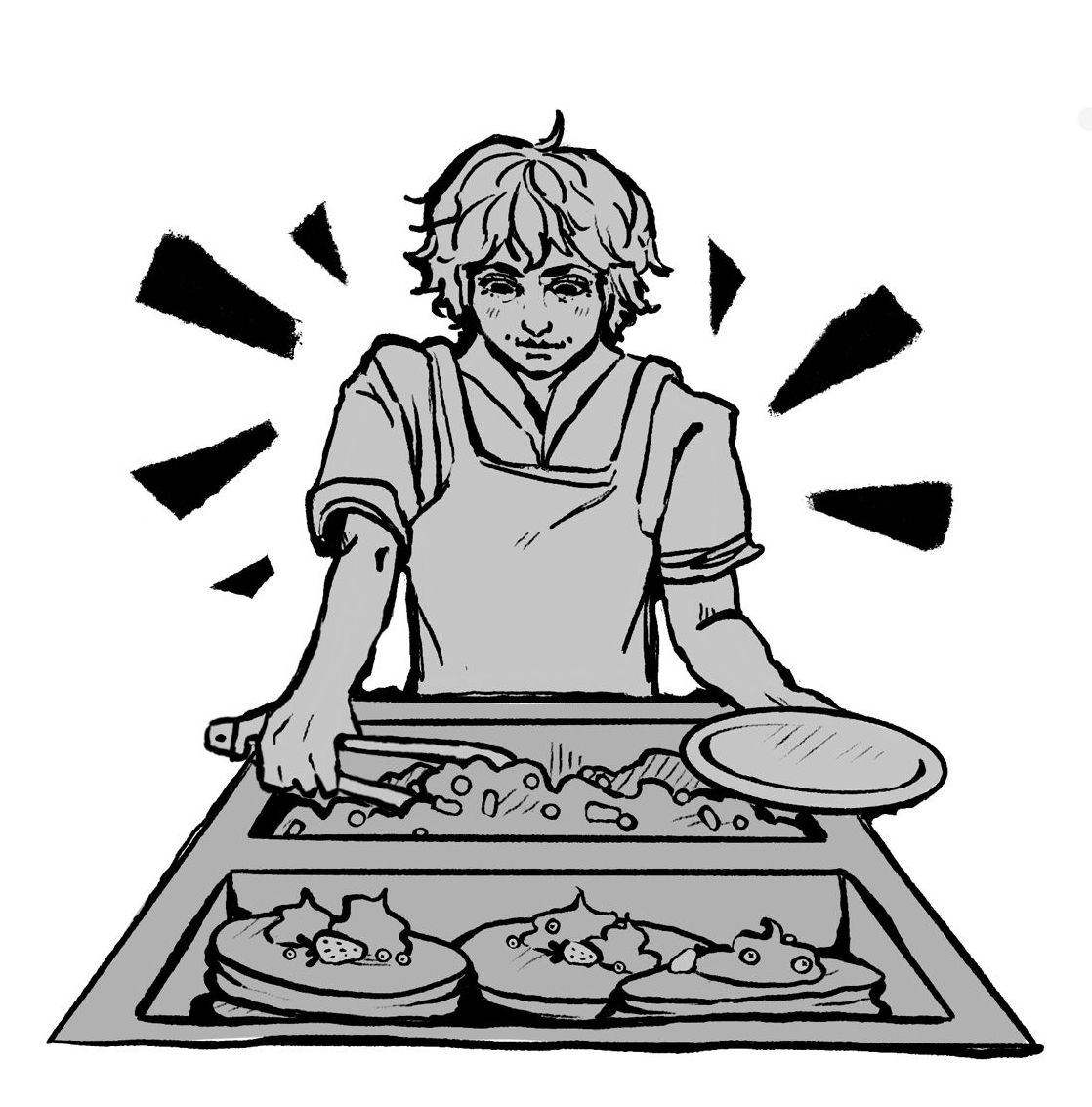
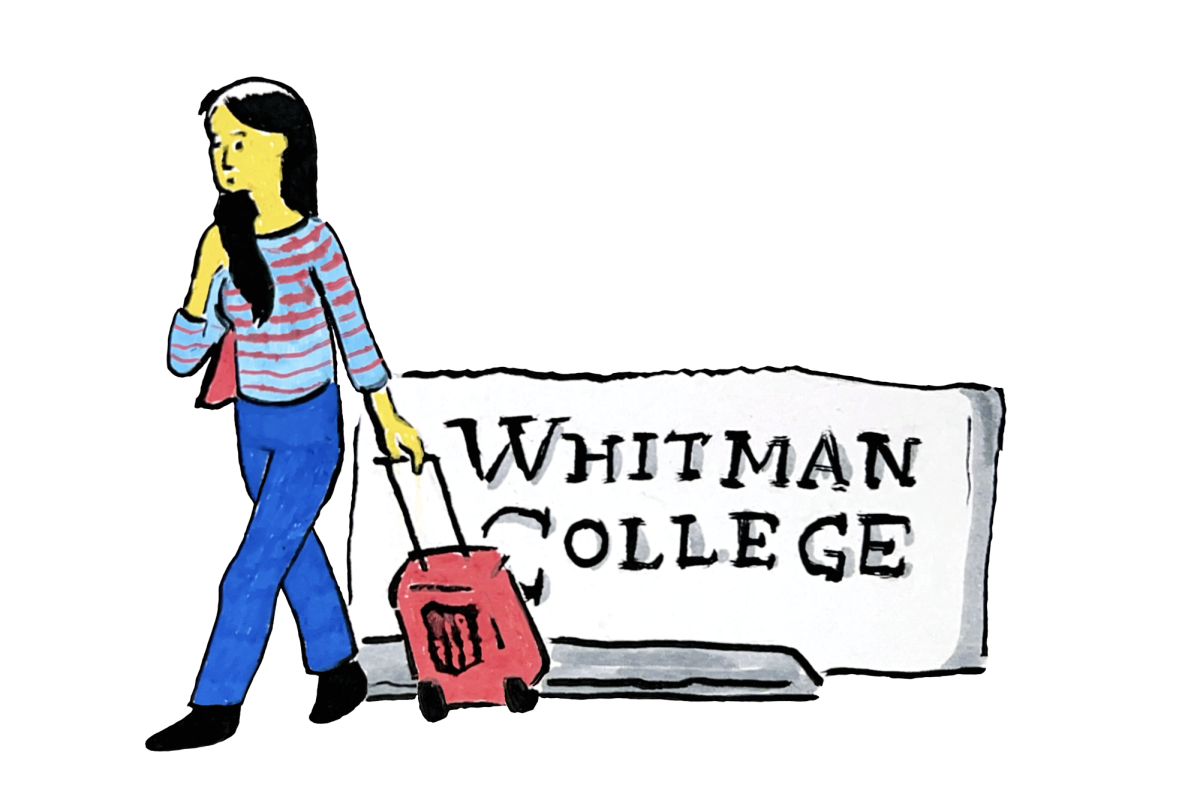
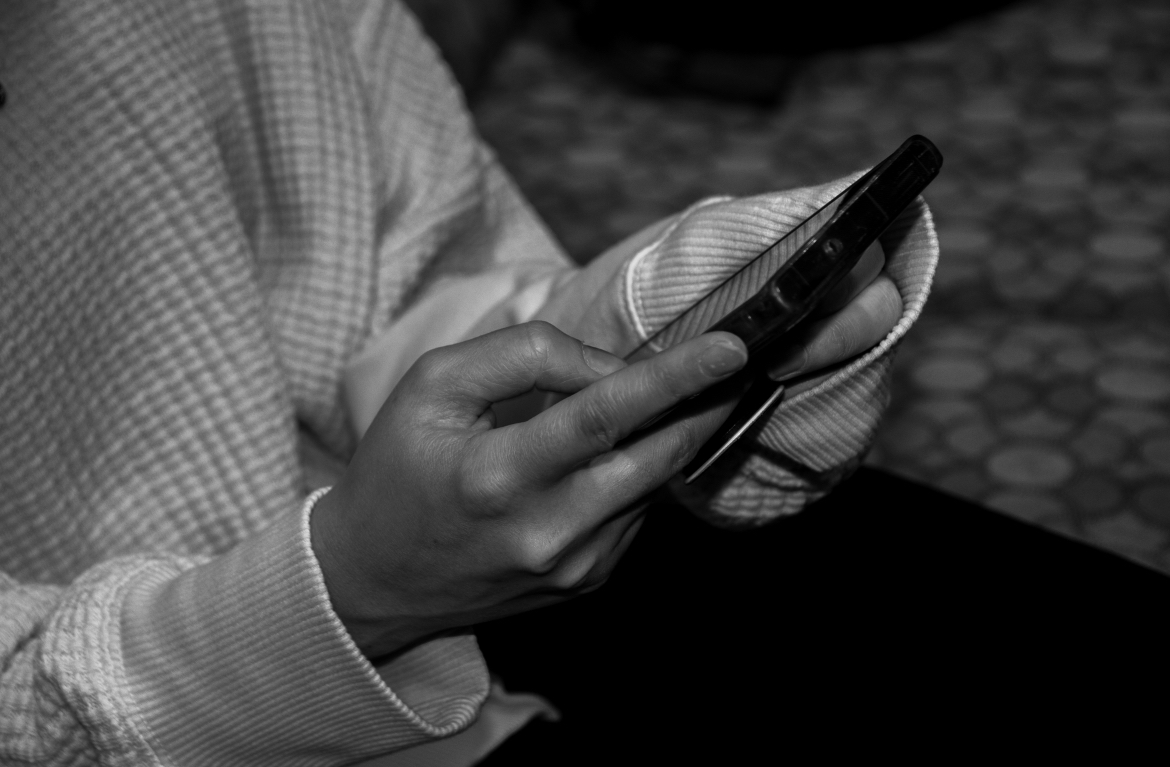
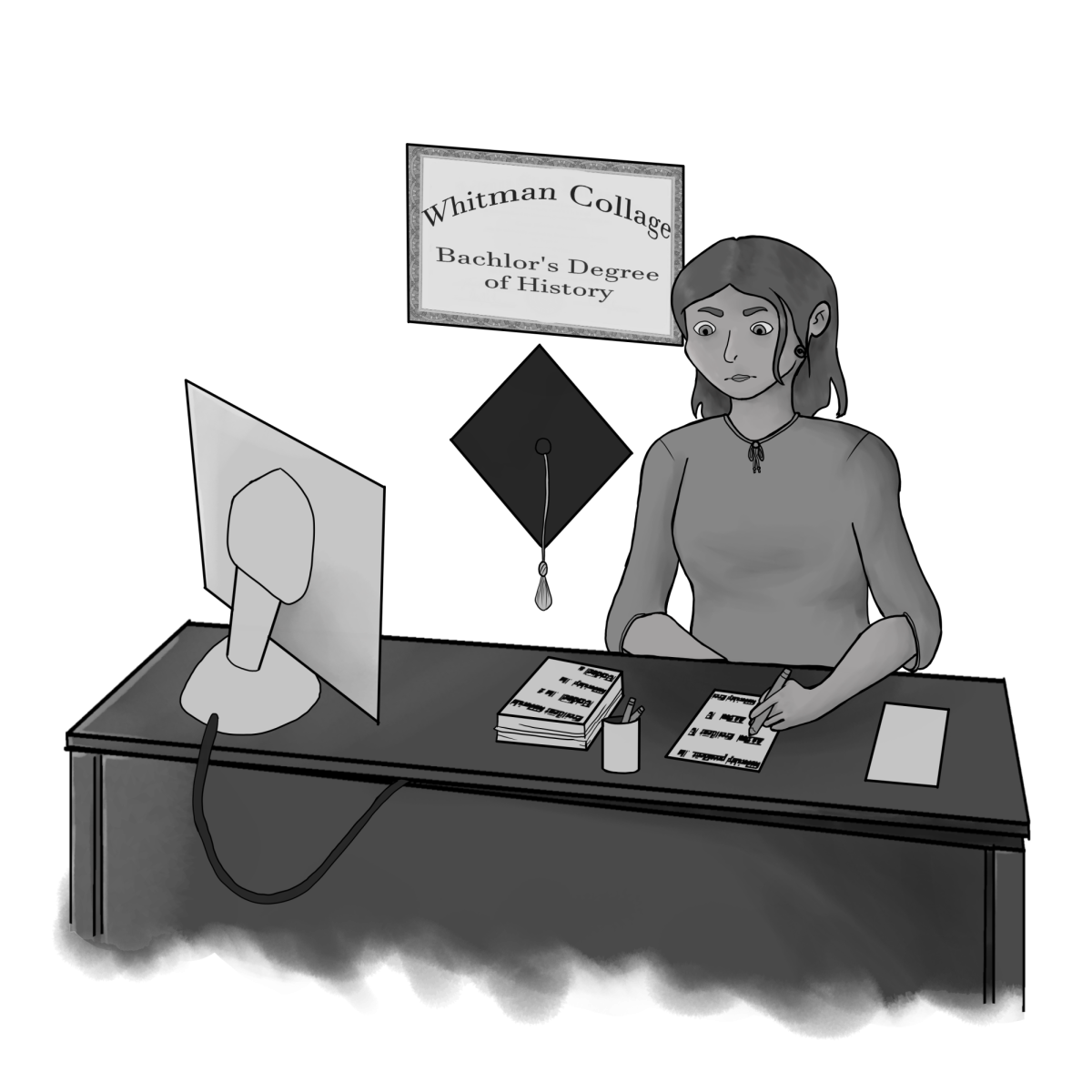
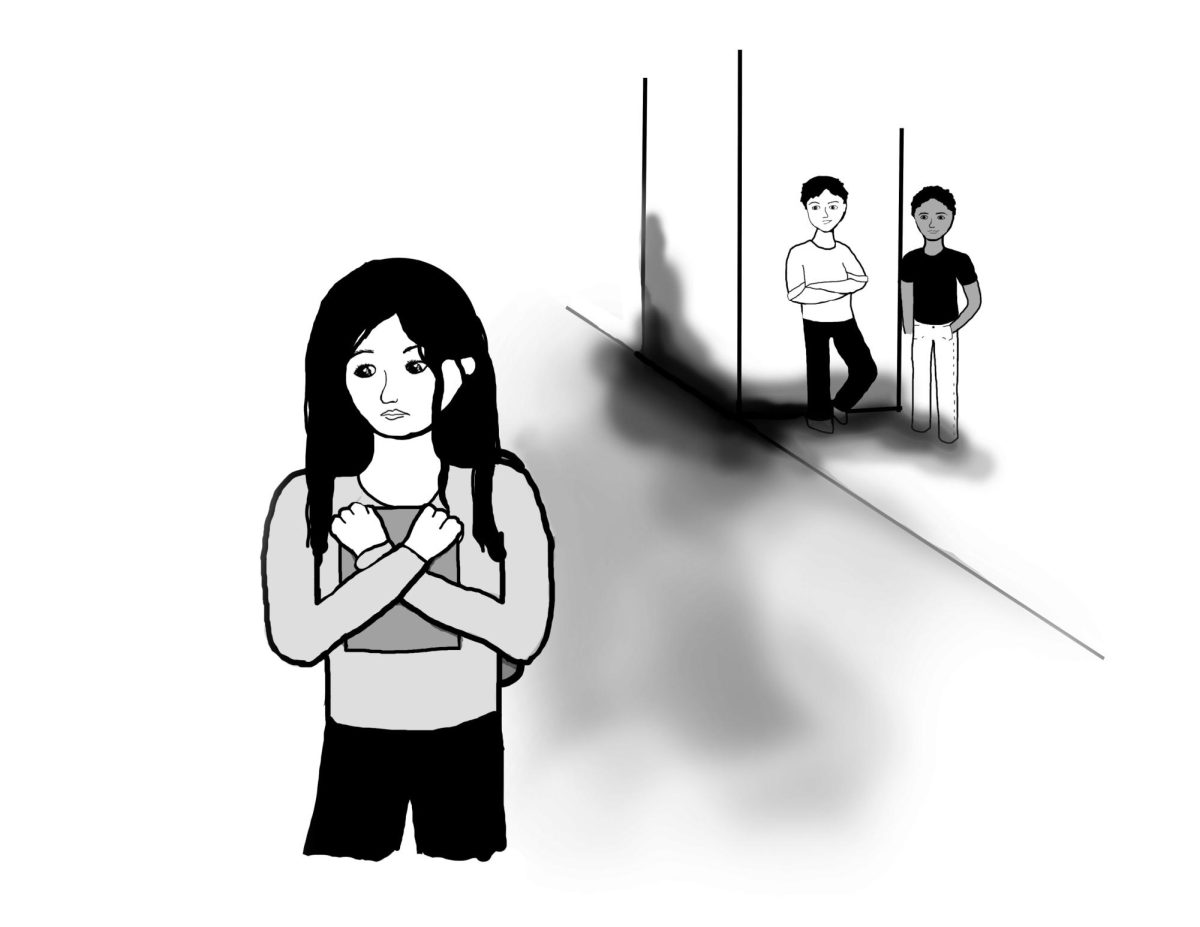
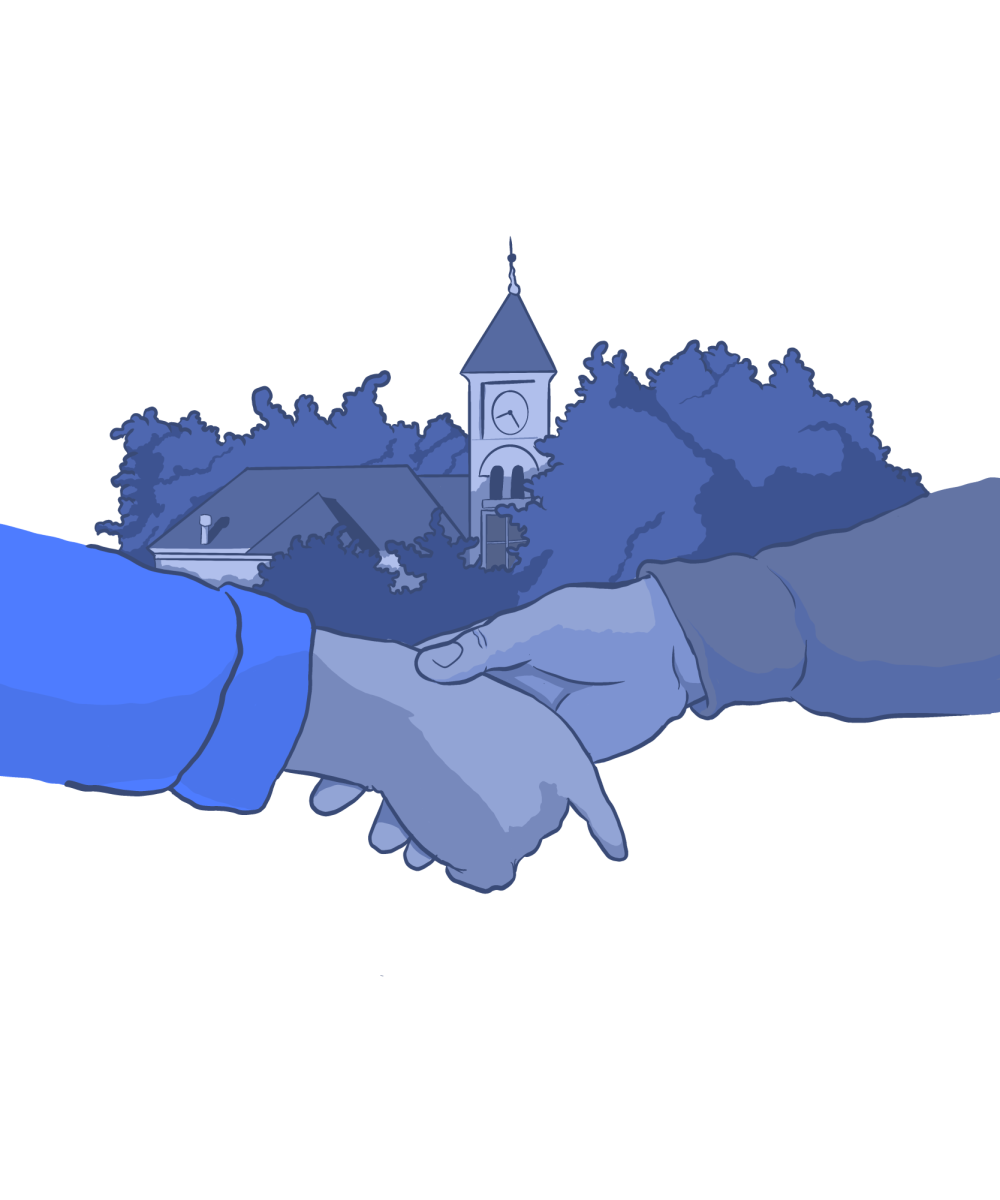
Zakir Hussain • Feb 9, 2024 at 9:50 am
Nice to see how the writer brings in different forms of activism for different groups of people. However, there is danger in analogizing the “jostling” crowd of a protest with a “raucous frat party,” which brings me to ask, “Could the introverts not attend protests at all?” Surely, I have seen a lot of introverts at these protests, certainly making themselves and their personal spaces uncomfortable by being there. So, there is something to be said about “introverts” bring in the same spaces as “extroverts” for a common cause.